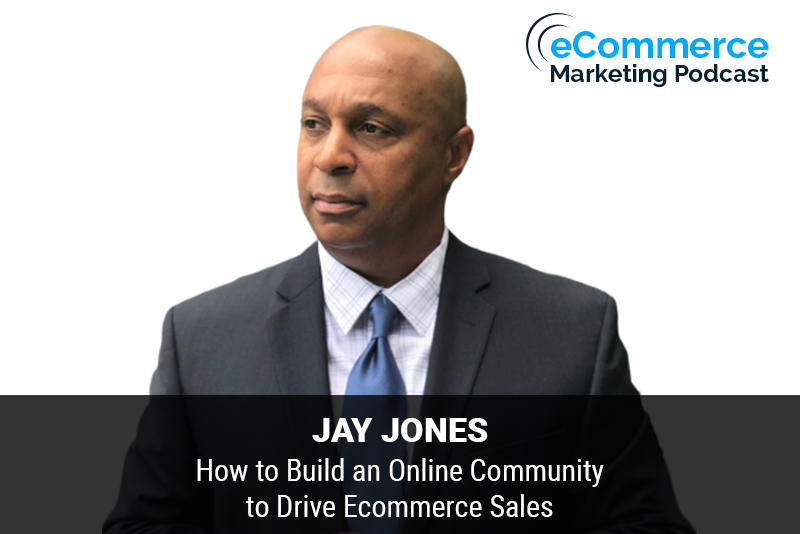
The eCommerce Marketing Podcast walks you through everything that goes into ecommerce marketing — from inbound marketing to paid advertising to conversions. Learn the strategies top marketing experts use to grow their businesses.
Marketing Strategies Revealed in this Episode:
- How to begin building a platform for your ecommerce business
- Specific marketing strategies to use to grow your platform
- The tools and resources needed to grow your ecommerce business platform
- Ecommerce businesses that have created successful platforms and the strategies they used.

Episode Title: Building a Successful E-Commerce Platform with Jay Jones
Host: Arlen Robinson
Guest: Jay Jones, serial entrepreneur, author, coach, speaker, and host of the “Black Entrepreneur Blueprint” podcast.
In this episode of the E-commerce Marketing Podcast, Arlen Robinson speaks with Jay Jones, a seasoned entrepreneur with over seventeen businesses under his belt, including two multimillion-dollar ventures. Jay shares his journey from corporate America to entrepreneurship and highlights the importance of building a strong e-commerce platform. He provides actionable insights on creating a community around your brand, identifying your target market, and leveraging digital tools for growth.
Key Takeaways:
- Introduction and Jay’s Background [00:00 – 03:30]
- Jay’s transition from corporate America to entrepreneurship [01:30].
- His journey through successes and failures, leading to the creation of “Black Entrepreneur Blueprint” [02:45].
- Importance of Building a Platform [03:30 – 07:00]
- The necessity of building a platform before launching products [04:00].
- The concept of “Do for Self” and creating businesses to build generational wealth [05:30].
- Identifying Products and Services [07:00 – 10:00]
- The six verticals of products and services you can sell [07:30].
- Determining your product or service to know the best platform for your audience [08:45].
- Creating Marketing Strategies [10:00 – 15:00]
- Building a platform before product completion to ensure a successful launch [10:30].
- Using newsletters to build a platform and communicate with your audience [12:00].
- Tools like Rasa.io to aggregate and curate content for newsletters [13:30].
- Monetization and Platform Building [15:00 – 20:00]
- Creating a community that knows, likes, and trusts your brand [15:30].
- Examples of how newsletters can serve as a base for monetization [17:00].
- Jay’s personal experience with building Black Entrepreneur Blueprint [18:00].
- Successful E-Commerce Platforms [20:00 – 25:00]
- Jay’s ecosystem built around his podcast, including online courses and marketplaces [20:30].
- The importance of patience and consistent effort in building a platform [22:00].
Guest Info:
- Name: Jay Jones
- Position: Host of Black Entrepreneur Blueprint Podcast
- Website: BEBConnect
For more insights and to connect with Jay Jones, visit BEBConnect.











